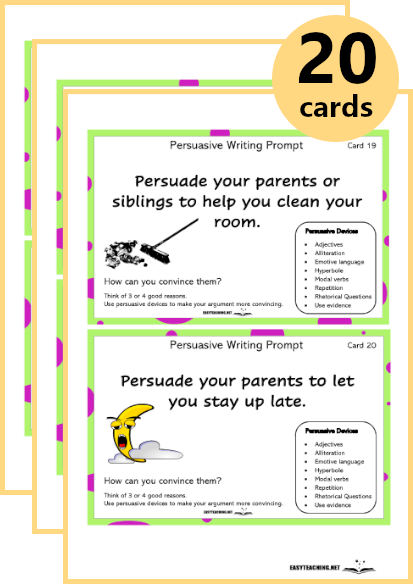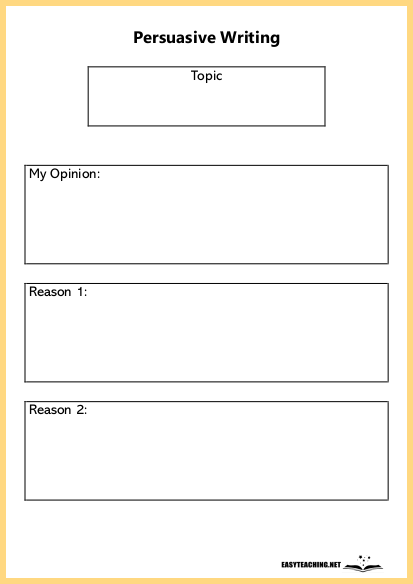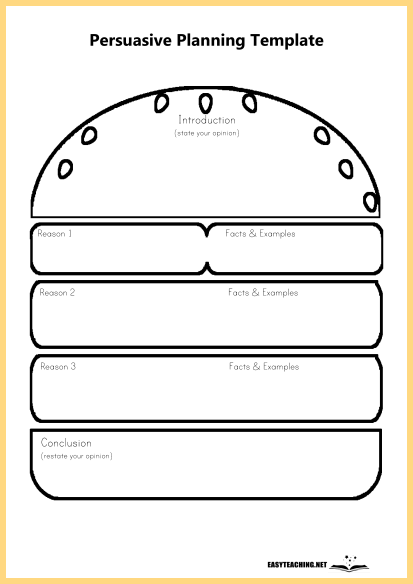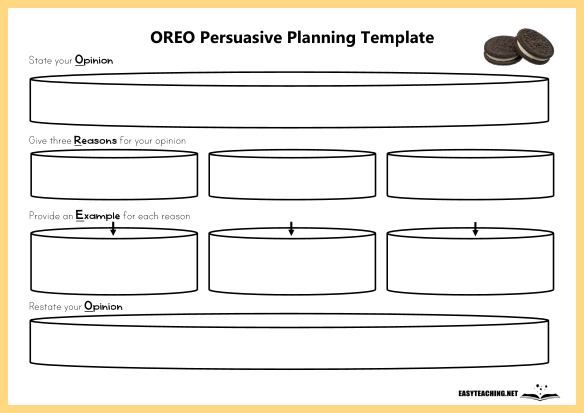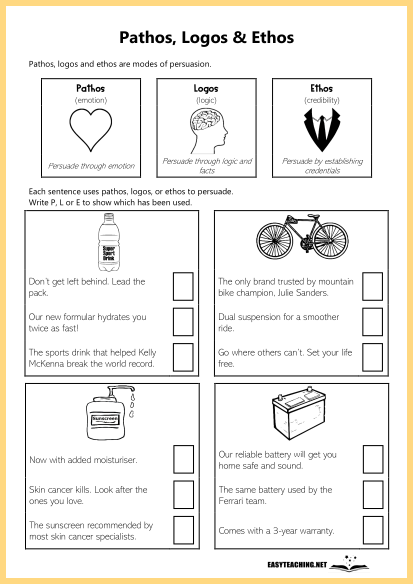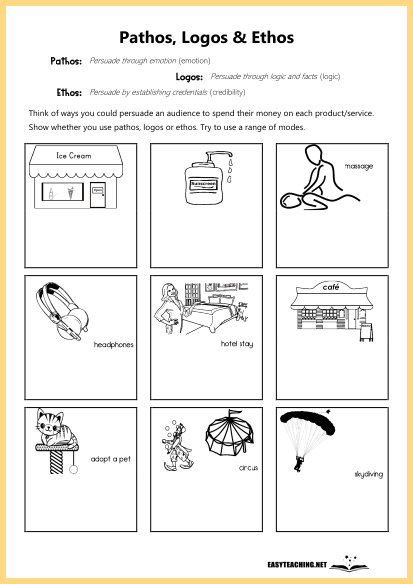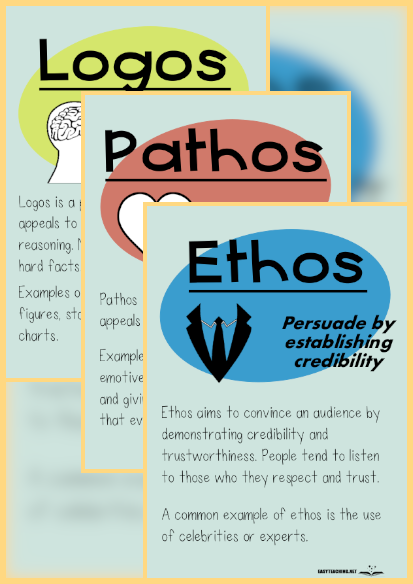Blog / Literacy
Teaching Persuasive Writing: Activities & Strategies for the Classroom

We encounter persuasive language in our everyday lives, from our friend trying to convince us to try the new Mexican restaurant to our children coaxing us into extending bedtime. The ability to persuade is an essential skill and engaging persuasive writing activities make learning this skill fun and effective. Teaching persuasive writing in the classroom helps students develop critical thinking, argumentation, and communication skills.
In this article, we explore different types of persuasive writing, persuasive devices, and nine engaging activities for teaching persuasive writing.
Types of Persuasive Writing
Persuasive writing comes in many different forms, though they all share the same purpose: to convince the audience to adopt a particular viewpoint. Different types of persuasive writing include petitions, opinion columns, advertisements, brochures and pamphlets, political campaign materials, speeches, letters to the editor and more. When teaching persuasive writing, it’s important to expose students to a variety of these text types.
Persuasive language devices are words and phrases that have the power to captivate audiences, evoke emotions, and change minds. Persuasive devices include repetition, rhetorical questions, modal verbs and adverbs, emotive language and others. Our article Persuasive Devices: Techniques for Student Writers details persuasive language devices and ideas for the classroom.
Persuasive Writing Activities & Strategies
1) Letter Writing
Teaching persuasive writing often starts with letter writing. Persuasive letters provide many opportunities for students to practise their persuasive prowess. Have students write a persuasive letter to the principal, a teacher or parents, arguing for a specific change they would like to see. For example:
Lunch breaks should be longer,
Our school needs a pool,
Our family should go on a trip.
2) Analysing Persuasive Texts
Provide students with an exemplar of a persuasive text and have them deconstruct it. What has the author included in the introduction? What are the main arguments the author presents? Which persuasive devices has the author used? What is the purpose of the conclusion? What other language features have been used? Deconstructing a well-written persuasive text helps students understand the underlying structure, organisation and content.
3) Persuasive Writing Prompts
Persuasive writing prompts are a great way to get students thinking outside of the box, considering topics they mightn’t otherwise. The prompts can even just be used as a brief argument brainstorming activity. You have 5 minutes to brainstorm as many arguments for (or against!) as you can.
4) Convincing Characters
Have students take on the role of a character from a familiar story. In that role, they are to try and persuade another character to feel or act in a certain way. This is a fun way to integrate storytelling into persuasive writing lessons. This is a fun way to weave persuasive writing into a variety of topics and classroom activities.
5) Show ‘n’ Tell ‘n’ Persuade
Combine persuasive writing practice with Show and Tell by challenging students to go beyond simply describing their item. After presenting, they must convince the class that their item is the best choice. This encourages students to think critically about their reasoning and apply persuasive techniques in a real-world context.
To make the activity more structured and engaging, introduce a Persuasion Scorecard. The class (or appointed judges) can rate each presentation based on specified criteria such as, strong reasons and supporting details, use of persuasive devices, confidence and delivery, and creativity in argument.
Variation: Pair students up based on similar items (e.g., two favourite books, two types of snacks, two different toys). Each student presents their item and makes their case, using persuasive techniques to convince the class why theirs is the better choice.
6) The Shark Tank!
Organise students into pairs and assign each pair a product idea (e.g. a flavoured water bottle, an alarm clock that works on smell, kangaroo shoes). Pairs must try and convince the class, ‘the shark tank’, that their product is a winner! This activity combines persuasive language, critical thinking, and creativity.
7) Debating Rules
Assign small groups of students the task of creating a poster/presentation/video designed to convince their classmates to follow one of the classroom rules more carefully. This activity reinforces persuasive writing in real-world contexts.
8) Persuasive Writing Graphic Organisers
Graphic organisers are invaluable tools for teaching persuasive writing. They can be used to help brainstorm ideas, organise arguments, and create an outline of the structure of a persuasive text.
9) Logos, Pathos and Ethos
Persuasive writing relies on three main strategies: pathos, logos, and ethos, each helping writers connect with their audience in different ways.
- Pathos appeals to our emotions, tugging at our heartstrings and evoking empathy from readers.
- Logos relies on logical reasoning and facts to persuade with evidence and sound arguments.
- Ethos establishes credibility by appealing to the character and reputation of the writer or speaker.
Teaching persuasive writing should include examples of persuasive texts and employ each of these techniques, as well as to give students opportunities to use each technique.
The activities above are just a few ways we can engage students in persuasive writing, guiding them to develop strong arguments, consider different perspectives, and communicate their ideas effectively. Teaching persuasive writing equips students with essential skills they will use throughout their education and beyond. For more resources and ideas, visit our Persuasive Writing page.
Related articles

Unlocking Kids’ Potential: Early Literacy
Exposure to literacies in the early years is a strong predictor of literacy success in later years.
Read More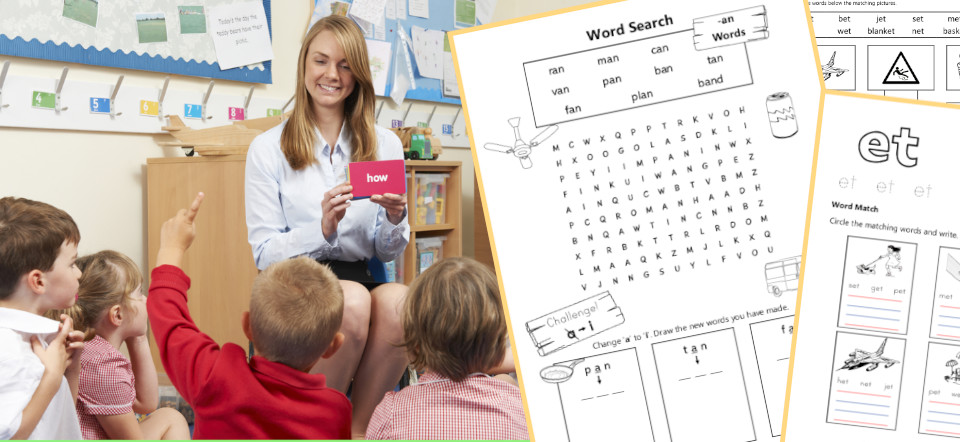
Free CVC Word Worksheets to Boost Early Reading Skills
Learn about CVC words and browse a collection of free CVC worksheets.
Read More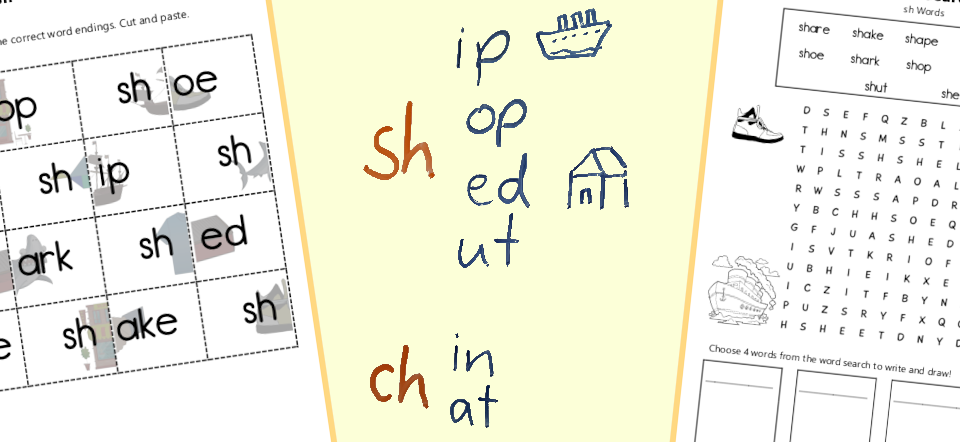
Free Printable Digraph Worksheets to Target Phonics
Browse a collection of free digraphs worksheets to help build phonics skills.
Read More





